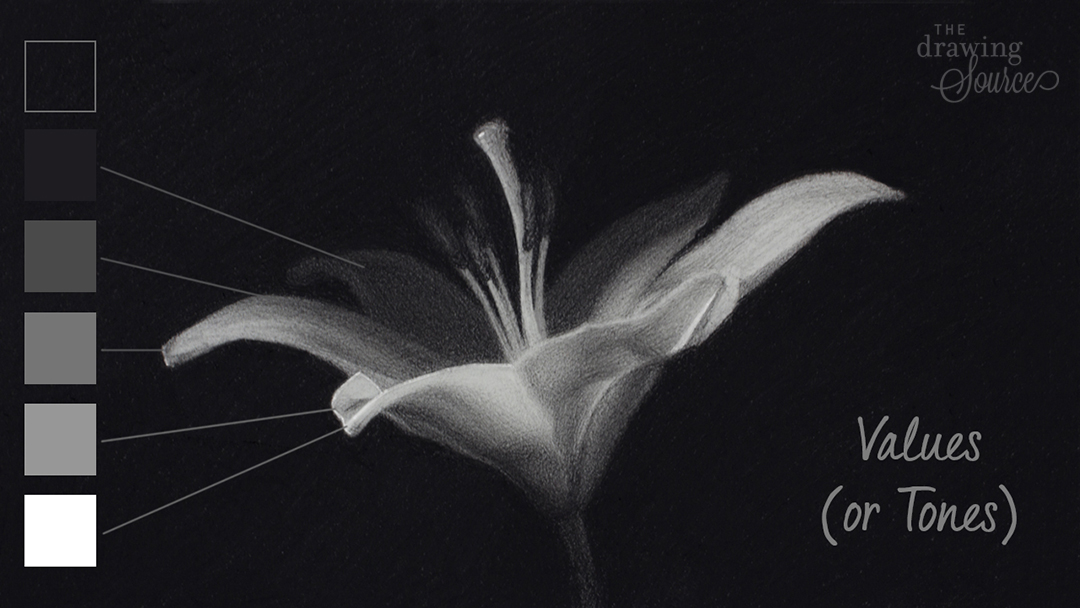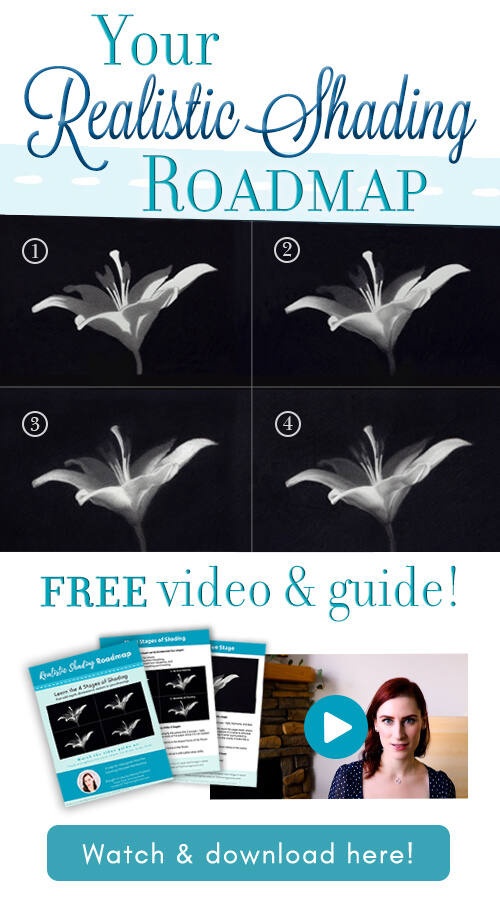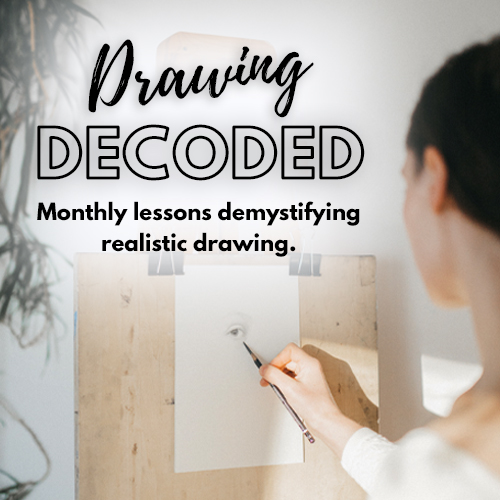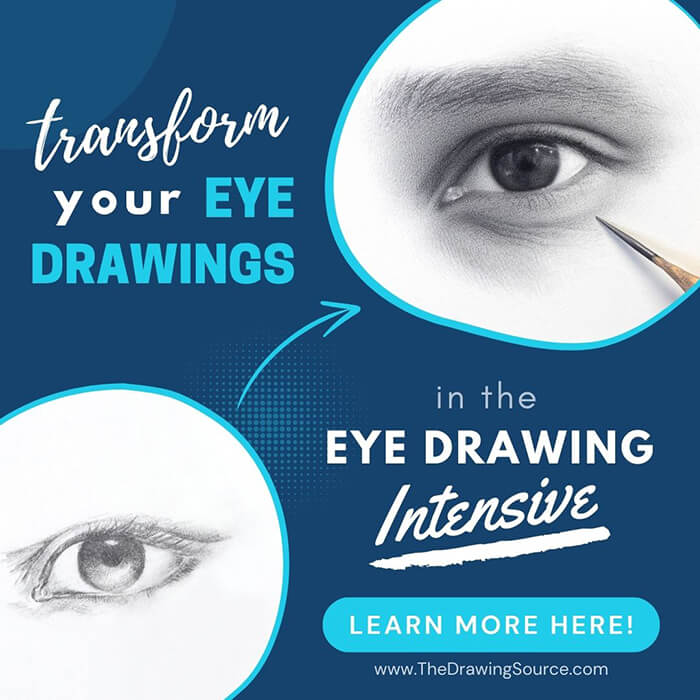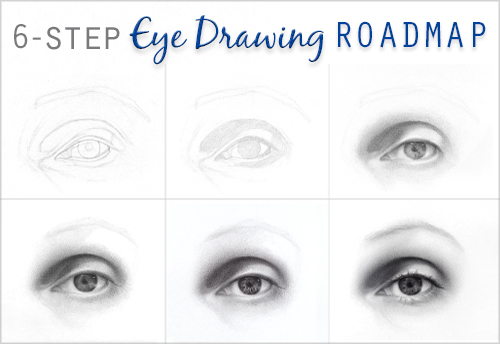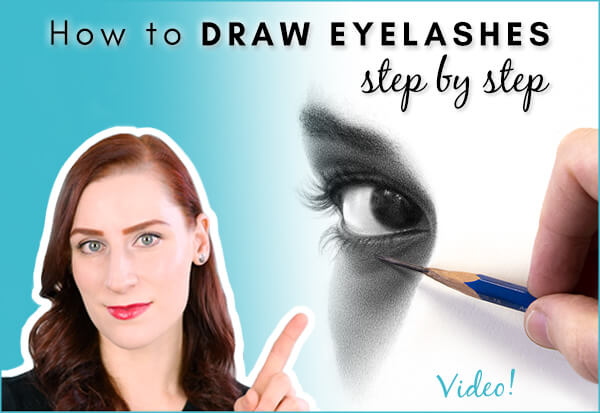- Home
- Value Drawing
Value Drawing: A Key to Realism
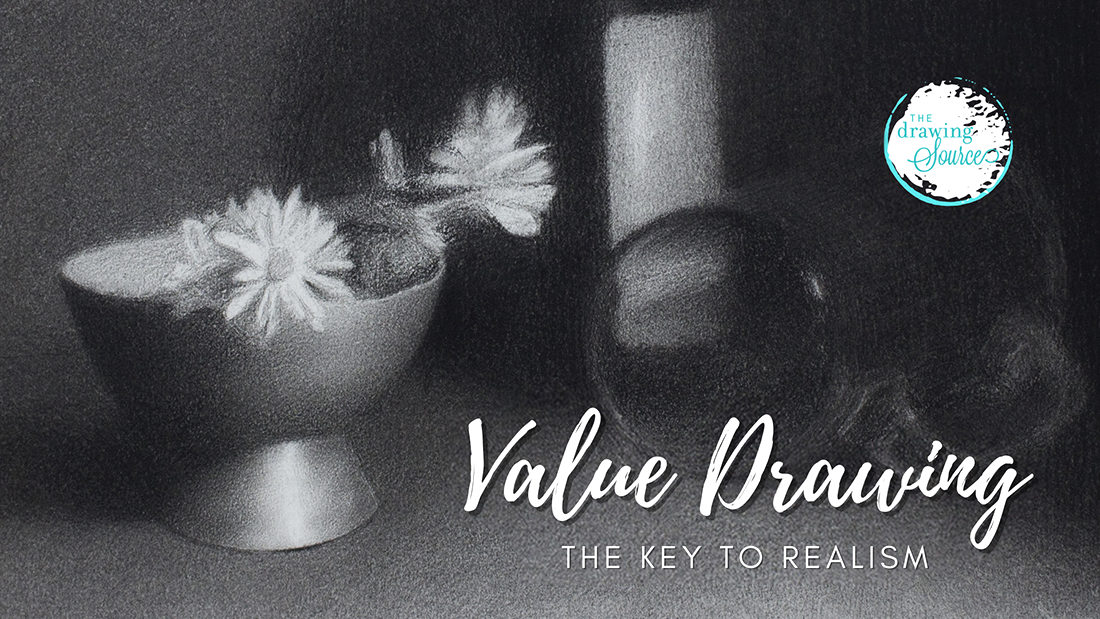
Want to watch a video lesson on value drawing?
Sign up for my free mini video course!
Value drawing can be used to create an image that feels so real and spacious that it seems like you could reach right into it!
It helps us create believable space, mood, atmosphere and various "special effects" in our pictures. It is an incredibly versatile tool when understood and used correctly!
So, what is value?
"Value" simply refers to how light or dark an object or area is.
A drawing is said to be a value drawing when it is in black and white, when it has no color. Black, white, and the many shades of gray in between the two are called values (and sometimes tones).
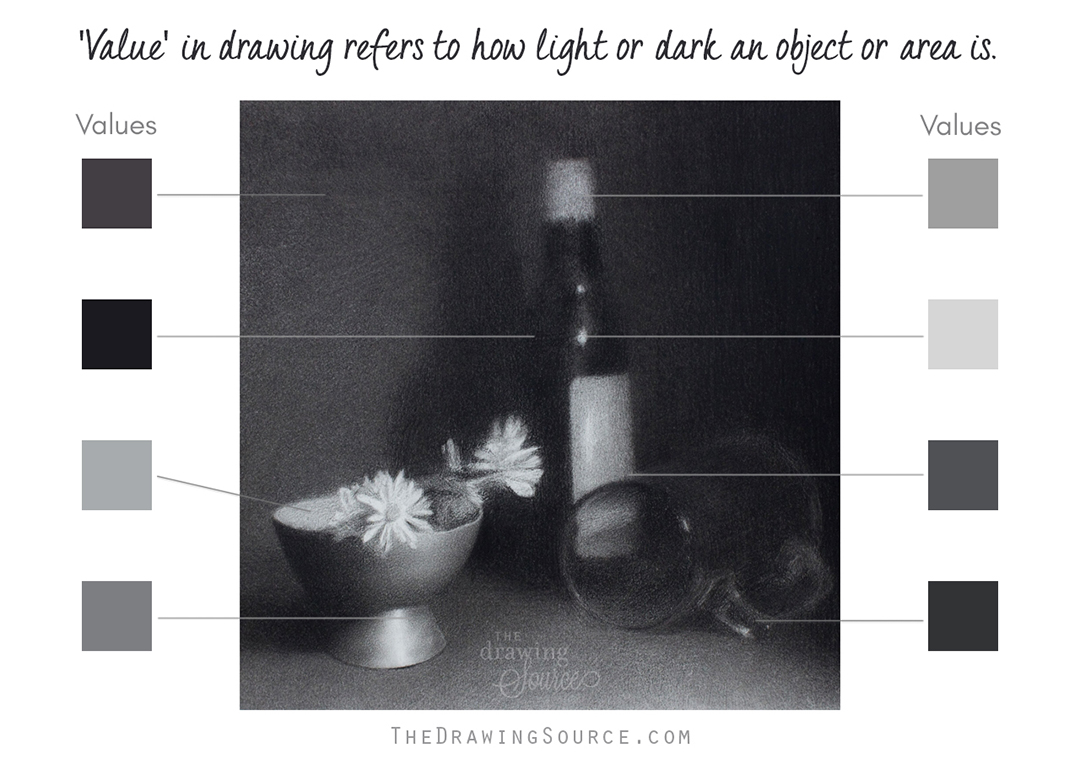
We See by Means of Values
Value isn't just important to drawing: it's what allows us to see form!
Our entire visual experience and perception of the world depends on light. Whenever we see anything, it means that what we are looking at is being illuminated by a light source.
As an object turns away from the light source, less light can reach it, so it gradually darkens. Eventually the object falls into shadow where light can no longer reach it. This incremental darkening of an object turning away from light creates a range of values.
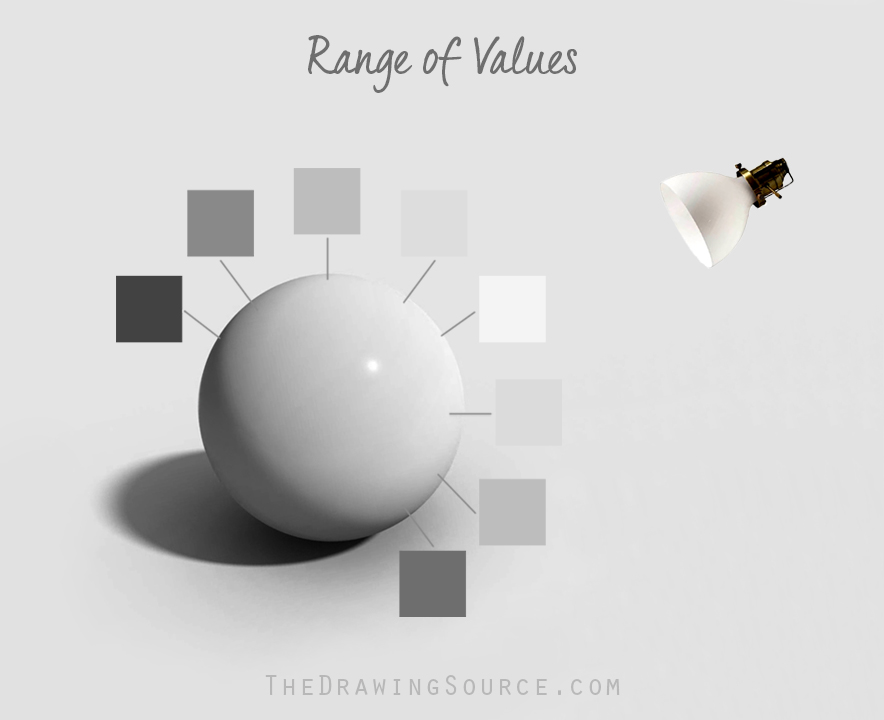
We see form through these differences in values, or differences in lightness and darkness. It is this range of values that makes objects look three-dimensional.
For example, take a look around.
Are you sitting at a table? What is making it appear three-dimensional? The side plane and the top plane of the table are two different values, right? One plane is most likely lighter, and the other is darker.
When we draw with value, we mimic the way that light falls on form to create the illusion of three-dimensionality.
To create a realistic drawing, we must mimic the way that values appear in life.
Related Page: Value, Light and Form
The Importance of Value Relationships
So, why is value drawing the key to realism?
Well, we know that values create the illusion of form and three-dimensionality. But more specifically, it is the relationships between the values of an object that make it look convincingly realistic.
"Value relationships" simply mean how dark or light one value is compared to another.
To draw a believable object, the value relationships in our drawing must mimic the value relationships that occur in life.
Let's use this photograph of a sphere to demonstrate the importance of value relationships.
What happens if I change the value of only one element in the image (therefore changing the value relationships in the scene)?
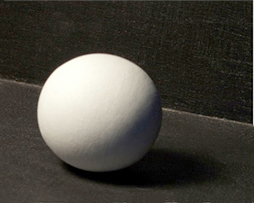
Here I have drastically lightened the shadow area on the sphere only, without changing any other values in the image.
The result is that it looks unnatural and defies logical sense.
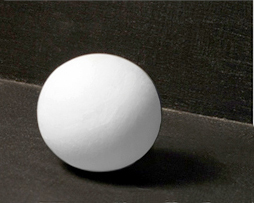
It looks like there is a very strong reflected light illuminating the sphere's lower half, but where could it be coming from if the surface on which the sphere sits is unaffected? Additionally, lightening only the shadows caused the sphere to lose much of its three dimensionality.
If you were to make this same mistake in a drawing, it would have the same effect: your drawing would not look realistic because its value relationships would not mimic the ones occurring in life.
If you do not accurately represent the relationships between
the values of an object, you will not create a convincing drawing.
In this lies the importance of learning about and becoming comfortable with value drawing.
Value Drawing and Illusion
To draw is to create illusions. After all, we are using charcoal (which is basically a burnt twig) and a piece of paper to represent the skin, hair and clothing of a person, or the brick, glass and metal of a cityscape, for example.
When we draw, we attempt to create an illusion of the values found in nature. We can't truly recreate the exact values for several reasons:
1.
There are an infinite number of values in nature. Our human vision is
relatively poor, which makes it impossible for us to even see the full
value range that exist!
2. Our drawing tools have limited capabilities, restricting the value range that we can create using pencil and paper.
However, none of this hinders our ability to create realistic illusions of form, because we don't need an infinite range of values to create convincing drawings!
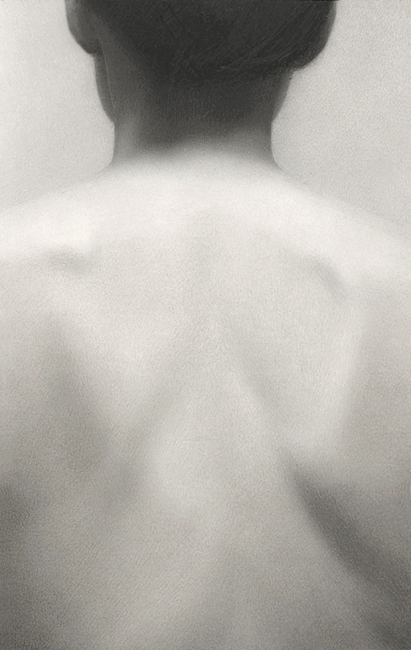 Drawing by Marina Fridman
Drawing by Marina Fridman
We can depict what we see most effectively by simplifying our observations.
Simplifying values produces a much more cohesive, believable drawing than recording every value and minute detail that you see. Artists realized this ages ago and created a system of simplifying and organizing values called...
The Value Scale
Artists traditionally use a system of nine values ranging from white to black, called a value scale. The scale consists of three light values (values 1 to 3), three middle values (values 4 to 6, also called half-tones), and three dark values (values 7 to 9). A value scale is essentially a simplified gradation.
Related Page: How to Draw a Value Scale (Step by Step Tutorial)
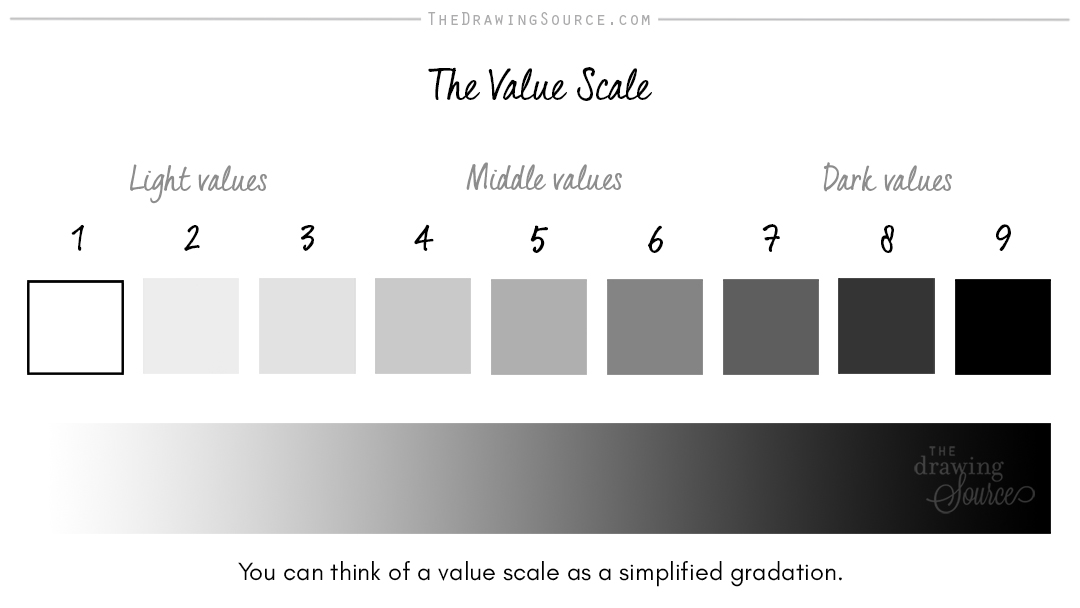
In drawing, the values on the value scale become your visual alphabet.
You can think of each value as a letter: on its own, one letter may not convey much, but when combined with other letters to form words, they create a
language through which we can communicate.
In a similar way, we combine values to create a drawing: a visual form of communication.
Continue Learning About Values and Value Drawing
- By downloading this free Realistic Shading Roadmap (+ video!)
- By taking my free Mini-Course: the Drawing Success Path
- Or supercharge your progress by diving into my core programs: Foundations of Drawing Technique, Intro to Smooth Shading and more, in the Drawing Decoded Membership!
Happy Drawing!

Enjoyed this page? Please share it!
Share buttons and pinnable images below:
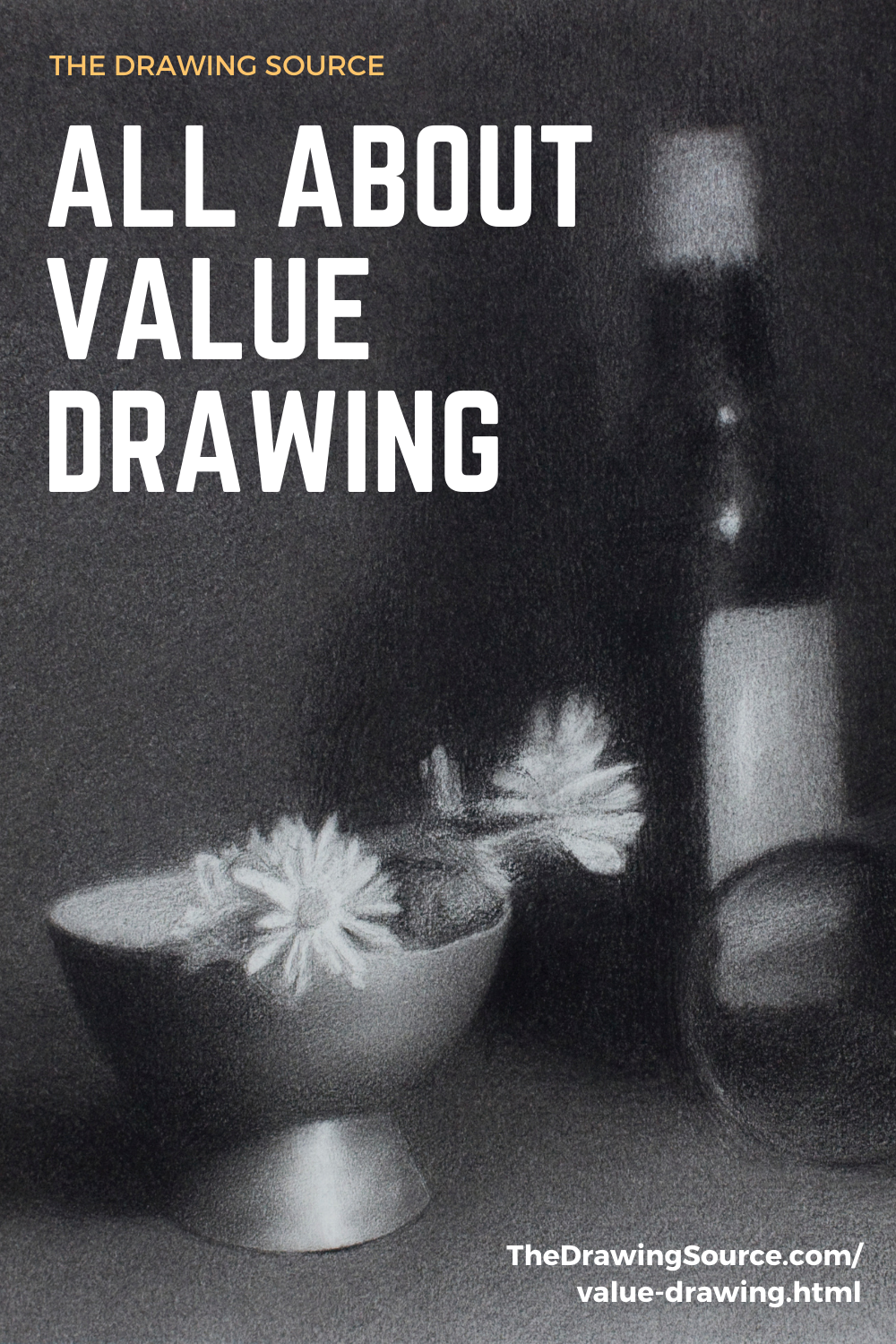
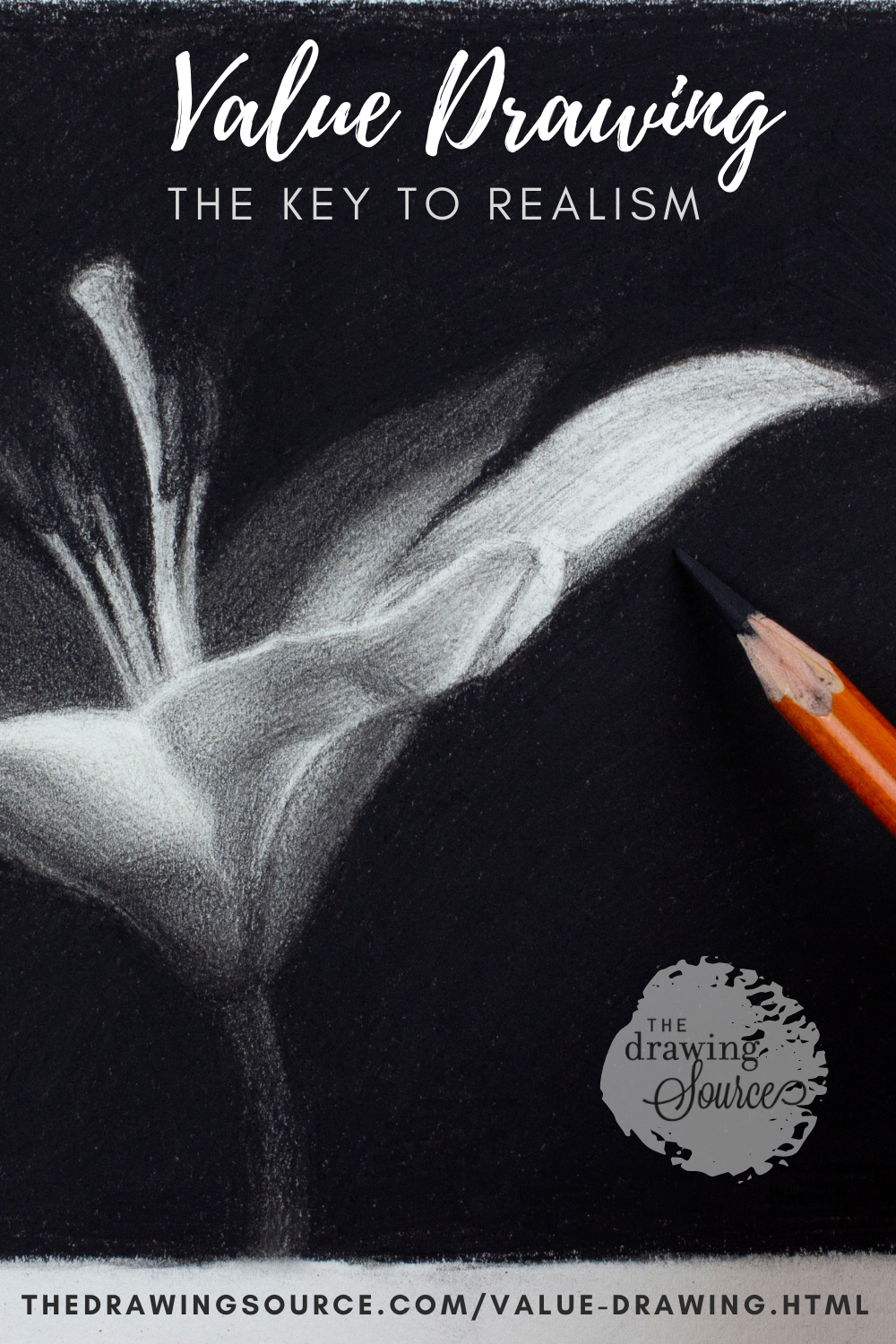
Related Pages
If you enjoyed this page on value drawing, you may also be interested in ...
